Find out what the propagation and garden teams have been up to this week.
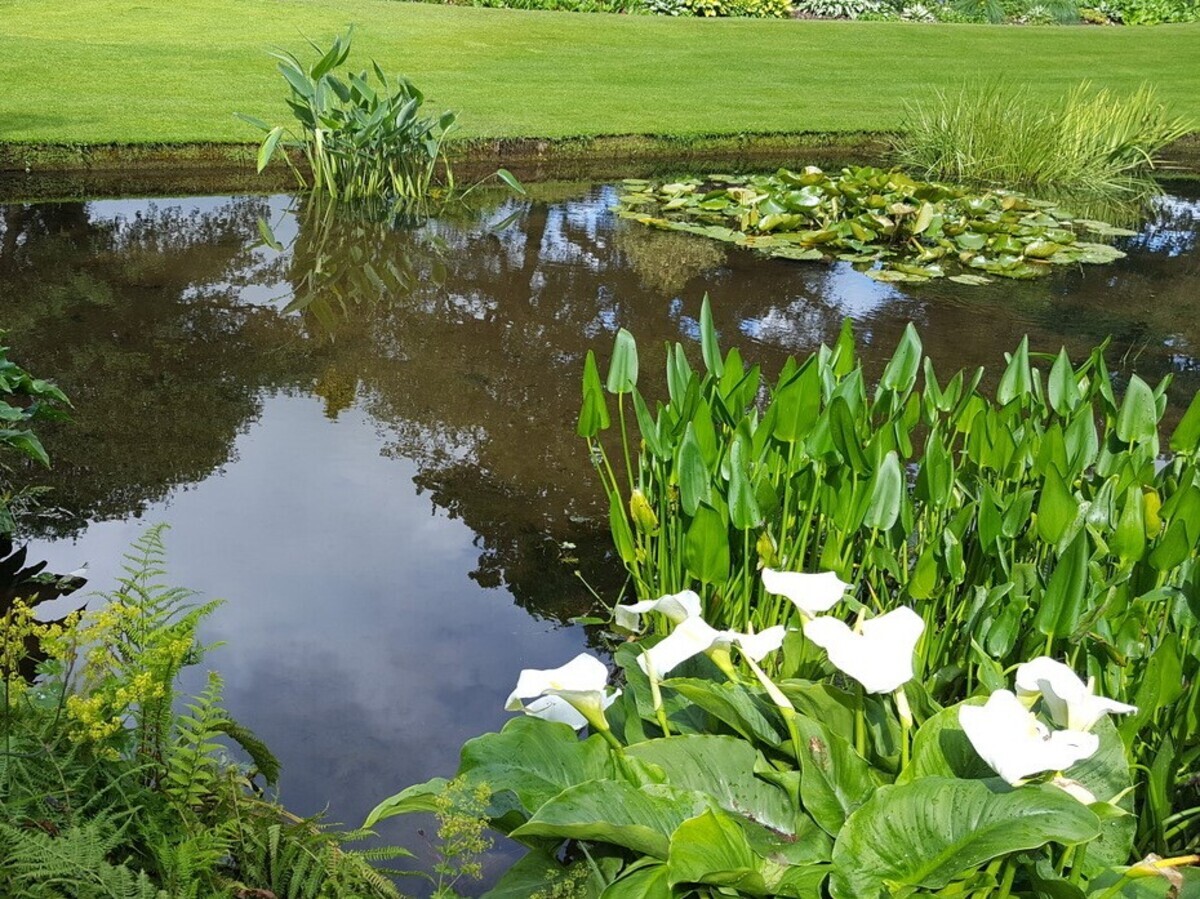
Marginal Maintenance

Having spent the first few days of June jumping in and out of the ponds here at The Beth Chatto Gardens, catching up with some long overdue maintenance, I suddenly remembered I was due to write a piece on this very subject for our blog! I was also reminded that attempting to walk backwards wearing waders with my feet stuck in the underlying mud and clay is somewhat foolhardy.
Having extracted myself from this perilous situation, much to the amusement of several of our visitors I pondered on the fact that many of our favourite water plants simply love our muddy, clay based ponds and if allowed to form ever increasing stands that require occasional thinning out. Late spring to early summer is an ideal time to tackle such tasks with the plants actively coming into growth, although due consideration must be given to the many pond creatures, piling the removed clumps by the water’s edge allows them to escape back into the water. An eye must also be kept out for nesting birds such as moorhens. The Mallards seem to prefer nesting higher up, often in the top of the leylandii hedge bordering our car park, safe I guess until the tiny, newly hatched ducklings tumble down and gather for the journey down to the waters-edge.
First to be tackled was the flowering rush, Butomus umbellatus. Only a few weeks earlier it was a job to spot them barely emerging through the mud. Our garden ponds are relatively shallow, the water is barely more than 50cm deep. Consequently, the ponds warm up rapidly and foliage soon emerges as spring turns to early summer. Now in early June, the keeled leaves of the flowering rush are a metre high, luckily the woody rhizomes are easily extracted from the mud and the clumps reduced to a more manageable size. The pink flowers of this British native resemble an allium or an agapanthus and it performs best in a natural, nutrient-rich pond rather than the restriction of a basket in a smaller lined pond.
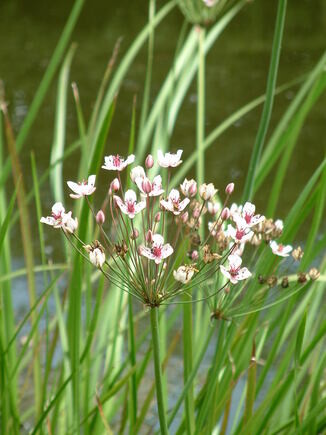
Next up was the sweet flag, well the striking variegated form to be more exact. Acorus calamus 'Argenteostriatus' a one-time member of the arum family that fools everyone into believing it’s an iris. Long underwater rhizomes are easy to control and not an unpleasant task as all its parts are sweetly scented, the foliage and rhizomes widely used as an ingredient in perfumes and flavourings as well as herbal tea.
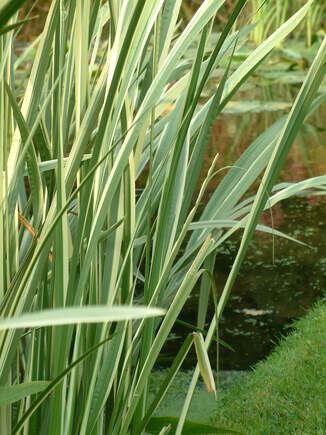
We grow two forms of the North American pickerel weed, Pontederia cordata and the taller more upright form, P. cordata var. lancifolia. Both of which thrive in our ponds and produce stems of closely packed, blue poker-like flowers usefully blooming late on in the summer. Whilst the latter is a much taller and less spreading plant, the species P. cordata by contrast produces lower spreading pools of glossy-green foliage.
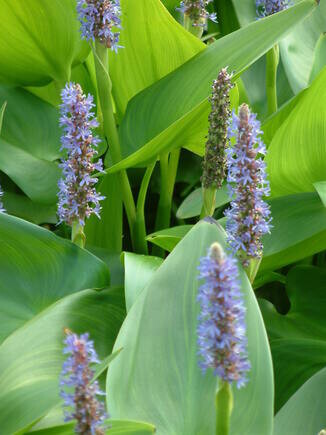
One of the most striking and impressive plants thriving in our ponds is the powdery alligator-flag, Thalia dealbata from the southern United States and Mexico. By late summer this will reach over 2m. Beth descriptively likened the plant to a Zulu’s shield and spear, the shield being the leaves and the flowering stem the spear, although the soft, bobbly flowers don’t quite replicate the business end of the real thing. Our clumps are so well rooted and so tough, this one takes time to extract from the pond and I would advise its grown in a large basket if possible.
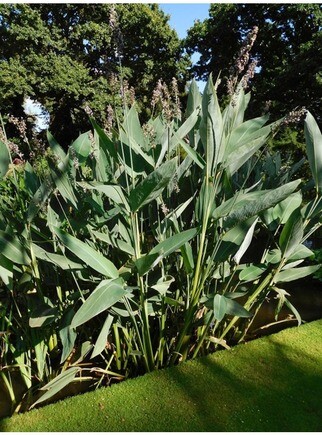
Many of our keen-eyed visitors are surprised to see the white florists arum lily, Zantedeschia aethiopica with its feet in the water. Although by no means a spreader it forms handsome clumps of bold overlapping foliage, a perfect foil to the bright white spathes. The form Z. aethiopica ‘Crowborough’ is considered the hardiest, along with green edged Z. aethiopica ‘Green Goddess, a flower arrangers must have plant. Thrives in the deep mud of natural ponds where the water will provide adequate frost protection so long as the crown remains submerged below any ice.

Finally, an eye must be kept on the common flag iris, clumps of which have self-sown around the margins of the pond. We prefer the softer, paler but unflatteringly named form, Iris pseudacorus var. bastardii. For smaller ponds, the brightly white and green variegated Iris laevigata ‘Variegata’ would be a fine choice, with large blue flowers a bonus.
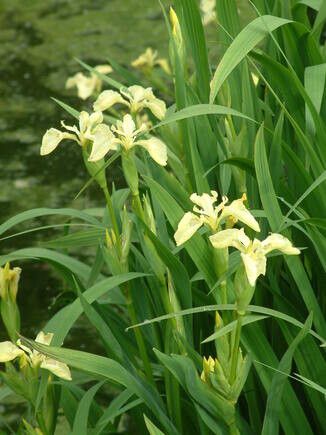
Although most of the surplus plants end up on the compost heap we do pot up required quantities for sale on the nursery and can offer substantially larger plants than often found in most aquatic centres.


COMMENTS